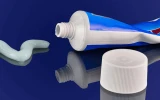Targeting the Top 4 Asthma Triggers in Your Home: A Step-by-Step Guide to Improving Indoor Air Quality
Published on Sep 2, 2019 | Updated - Jan 12, 2023

So, you’re one of the approximately 1 in 9 Australians with asthma?
Pollen season is a tough time for asthma and allergy sufferers and while you can’t control the outside, you can certainly keep your home as trigger-free as possible.
You’ve probably worked out by now what causes you to wheeze or feel that familiar shortness of breath. There may be 4 triggers hiding in your home right now you may not have thought of. Here’s how to fix them and breathe a little easier this spring.
4 Top Asthma Triggers at Home

1. The mould lurking in your bathroom
Mould lurks in most of our bathrooms and homes, in one way or another. Some infestations are worse than others!
Mould produces spores, which often trigger allergic or histamine reactions such as a runny nose, breathing issues, sore eyes and lethargy. And according to the National Asthma Council, if you're asthmatic, spores can cause asthma attacks.
Every time you step into your shower, you’re inhaling those mould spores!
How can you clean bathroom mould?
Treat smaller infestations of mould with a 1:1 vinegar and water solution. Wipe the mouldy surface down with the solution and let it dry. Keep in mind that you may need to repeat this process a couple of times.
You could also purchase a dehumidifier or a moisture absorber like DampRid. Don’t forget to use your exhaust fans while taking your shower and opening bathroom windows when you can.

2. Dust mites on your mattress
It’s a scary thought. Thousands of dust mites (and their excrement) could be hiding in your mattress, affecting your asthma. Here’s why. Dust mite excrement contains toxic enzymes that cause allergic reactions and respiratory issues.
Fun fact: Dust mites excrete twice their body weight every day. That’s a lot of toxins lurking in your bedroom, potentially making your asthma worse.
How do you get rid of dust mites in your mattress?
UV light is dust mites’ biggest enemy so open your bedroom windows regularly. Once a season, take your mattress out into the sunshine for an hour or two to kill off any nasties.
Make sure you are washing your bed linen regularly and invest in a good-quality mattress protector.
3. Not having your aircon cleaned often enough

Think about it. Your air-conditioner filter may not have been cleaned for years, creating a build-up of gunk, mould and other contaminants.
Every time you turn your unit on, that contaminated air is blowing throughout your home and – you guessed it – straight into your lungs.
How often should you have your aircon cleaned?
You should clean out your air conditioner filters once or twice a year. Just make sure that you follow your unit’s manufacturer instructions or you may void your warranty.
Another great way to improve your indoor air quality is to bring some indoor plants into your home. Not only are they on-trend at the moment, but some types can also purify the air in your home by eliminating toxins.
4. Not cleaning your carpet regularly

Be honest. How often do you properly vacuum your carpets? Keeping carpets clean is important because carpet acts as a filter for your home, trapping airborne pollutants.
On the flip side, a dirty carpet can be a reservoir for bacteria, mould and allergens, releasing them into the air whenever they’re walked on.
How do you keep your carpets asthma-friendly?
Do a thorough vacuum once a week and if you can afford it, invest in a HEPA (High-Efficiency Particulate Air) filter vacuum. HEPA filters are ideal for people with asthma because the filtration system prevents dust from being blown back into the air.
Try to keep pets outside most of the time as pet dander can also cause allergies or trigger your asthma. Don’t forget to give your lounge suite a thorough vacuum too.
How Electrodry Carpet Cleaning can help

The Electrodry team provides professional services that can ease the severity of your asthma and allergy triggers. Healthy mattress cleaning, mould remediation, air conditioner cleaning and our signature carpet dry cleaning are among the services we offer and include the use of specialised solutions and equipment that target the contaminants that can aggravate your asthma.




